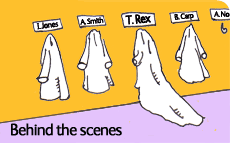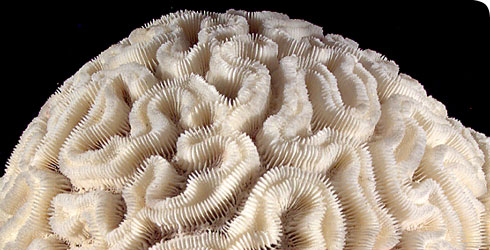Growth and form of Diploria labyrinthiformis
The appearance of Diploria labyrinthiformis (Linnaeus, 1758) recalls the shape and pattern of the outer surface of brains of higher animals:
- It forms large, rounded, often almost hemispherical colonies.
- Its skeleton (corallum) consists of numerous, elaborately intergrown, meandering, valley-like structures (meandroid corallites) which often branch.
Valleys
Each valley is inhabited by a single long polyp with many mouths which are arranged serially or in a row along the valley, and all surrounded by a single shared set of tentacles.
The valleys are:
- 5-10mm wide
- up to 6 mm deep
- U-shaped in cross section
Valleys are separated from each other by thick ridges that are sometimes called ambulacra or, more strictly, inter-corallite tissue or coenosteum.
Valley length can vary greatly within colonies, between colonies, and in different environments.
The precise factors controlling valley branching, and the number and length of valleys, in relation to colony size are not yet understood.
Ridges
Ridges are usually as wide or wider than the valleys - up to 15mm wide.
The profile across the top of the ridges is U-shaped (concave), with edges 2-4mm higher than the rest of the ridge.
Colonies
Coralla consist of two levels of coloniality (cf. modularity) as colonies grow by:
- increasing valley length, which is associated with the addition of new mouths at the ends of the valleys
- forming whole new valleys
Colonies can grow up to approximately 1m in diameter.
-

Costosepta morphology
Learn about the pattern and appearance of costosepta - structures consisting of plates (septa) that form crests (costae) across the valley walls, and get information about the internal structure of colonies.
Toolbox

In 2003 nearly 12,000 scientists from over 60 countries came to work at the Museum.
